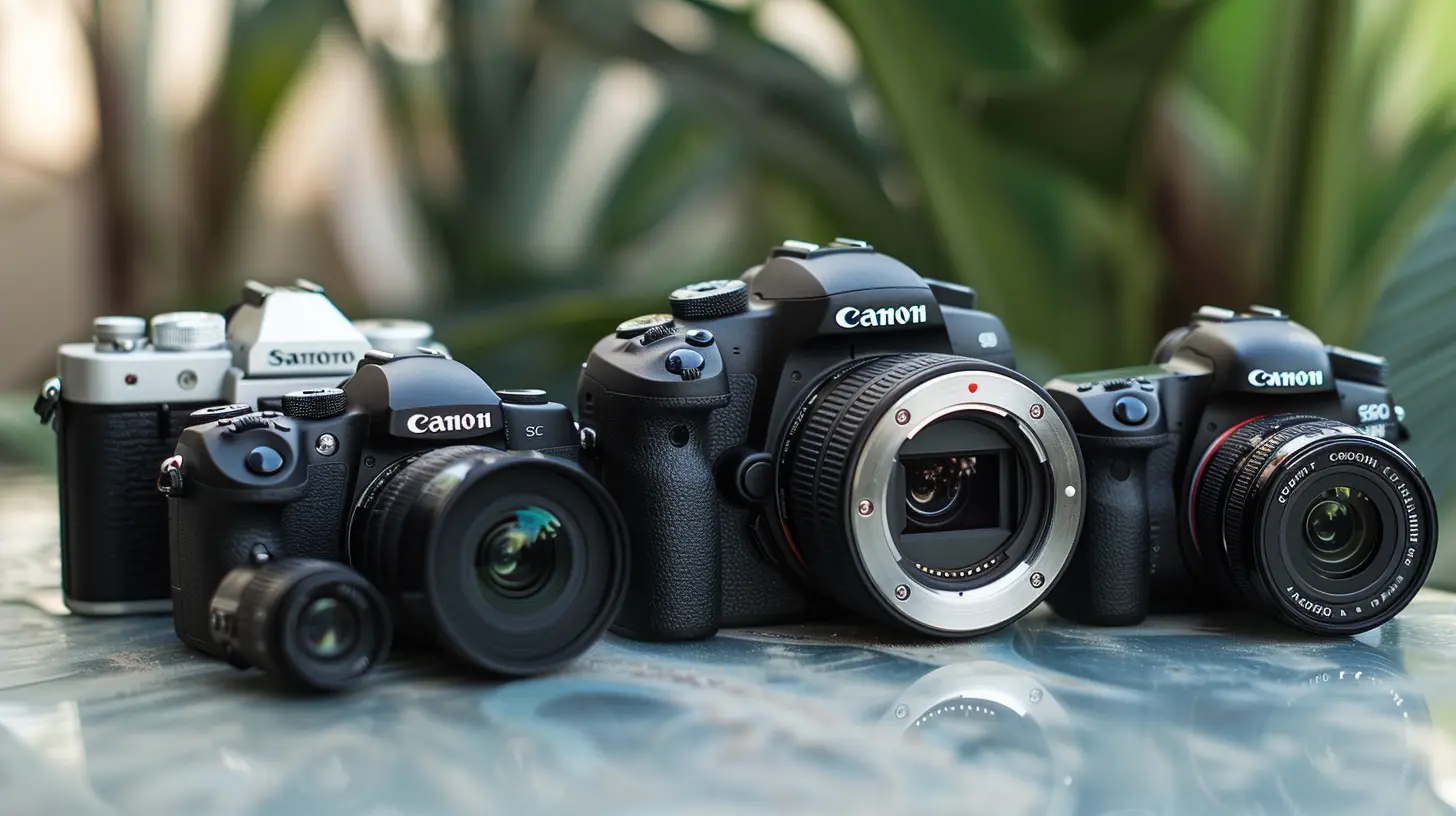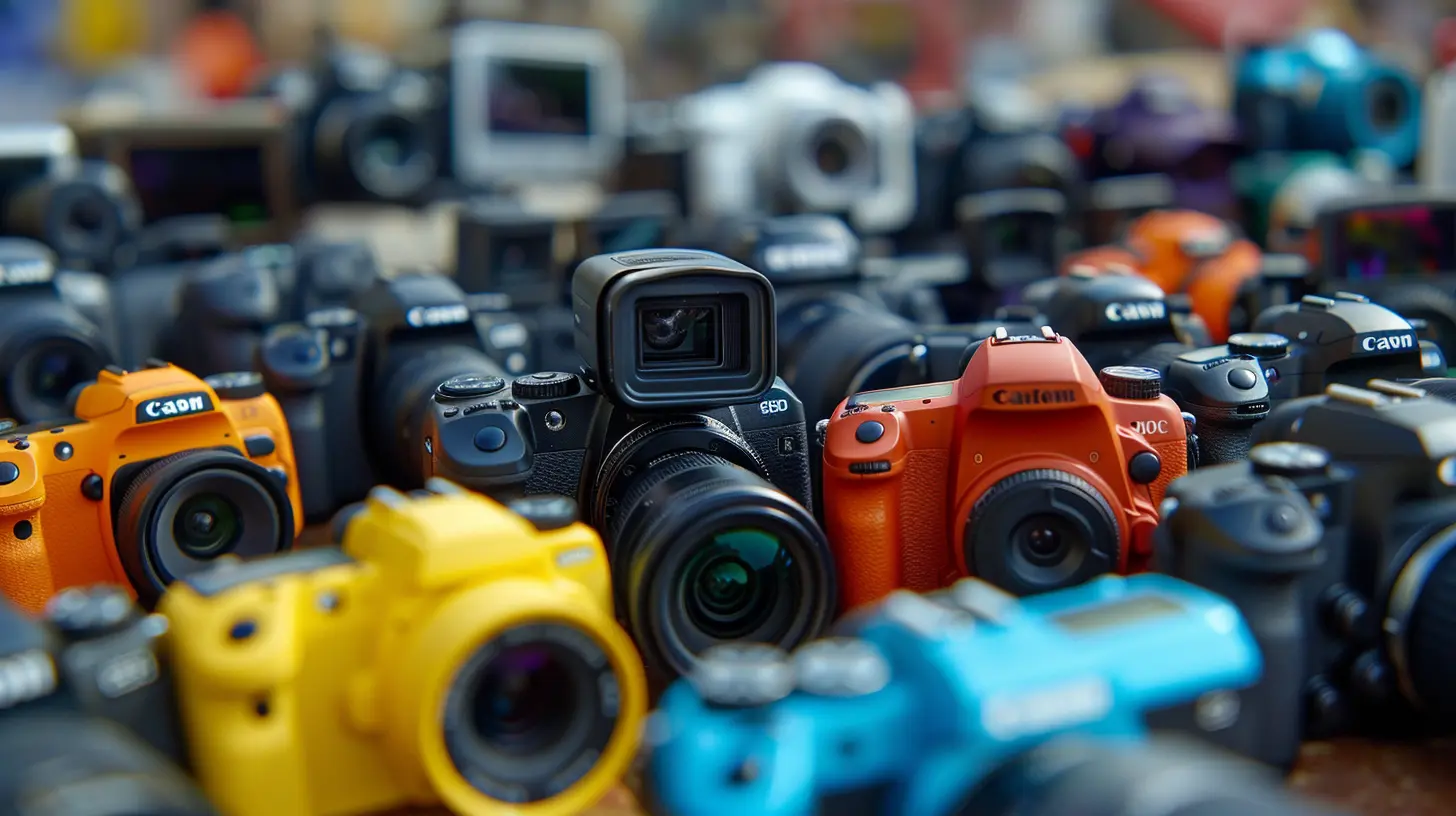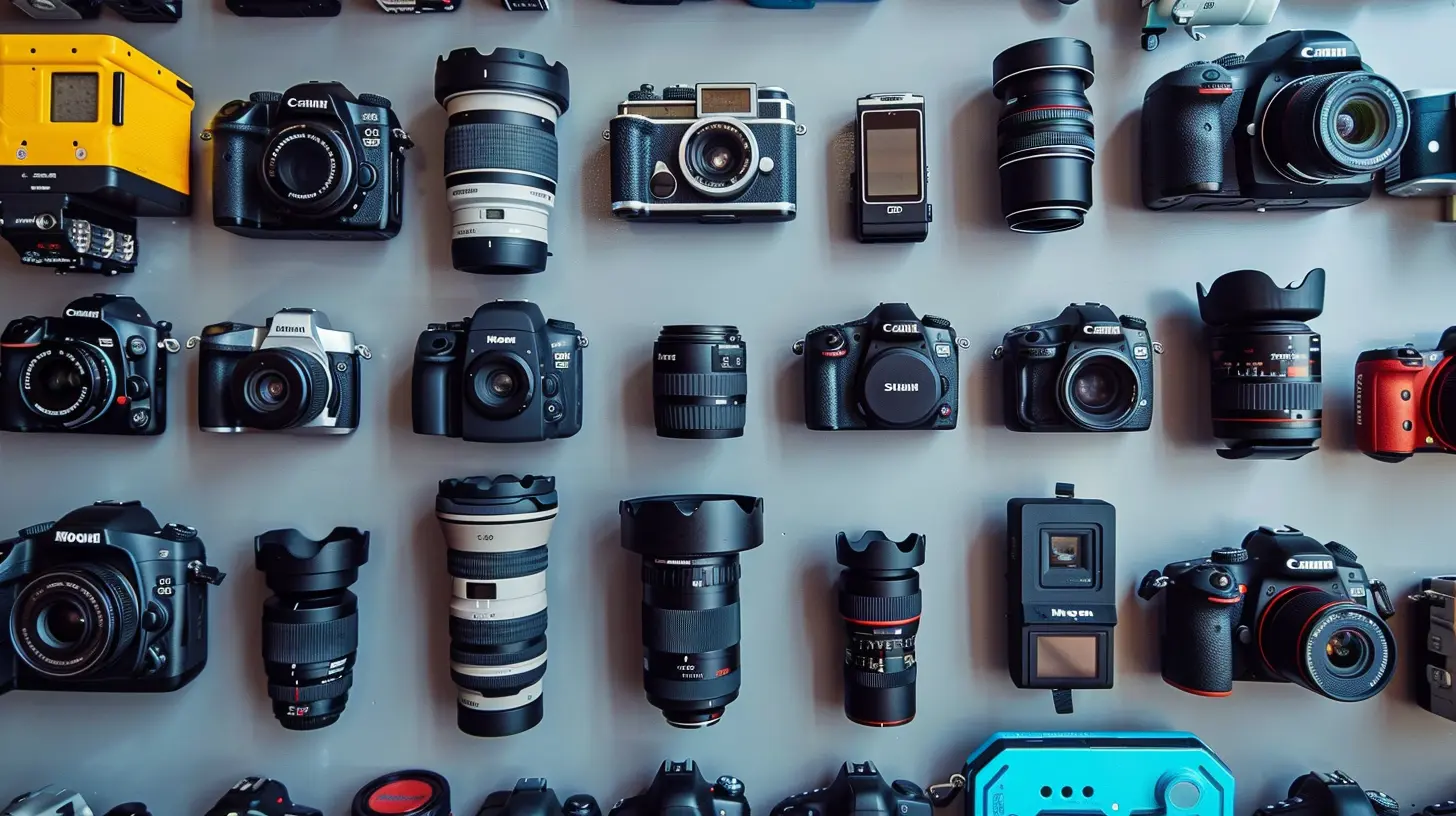Action Cameras vs. DSLRs: Which is Right for You?
1 July 2025
If you’ve ever found yourself stuck in the “action cameras vs. DSLRs” debate, you’re not alone. With so many choices out there, choosing the right camera can feel like picking a single favorite food when you love pizza, sushi, tacos, and everything in between. Whether you’re gearing up for your next backpacking trip across the Andes or planning to shoot your cousin’s wedding, the right camera can make or break your experience.
Let’s have a real talk about which camera might be better for your needs—because there’s no one-size-fits-all here. Everyone’s different, and what works for your adventurous buddy who skydives regularly might be overkill for someone who wants crisp portraits for their fashion blog.
So, sit back, grab a coffee (or tea, no judgment), and let’s break this down together.
What’s the Difference, Anyway?
Before diving deep, let’s clarify what we’re even talking about.Action Cameras – All About That Action 🎬
Think GoPro, DJI Osmo Action, or Insta360. These little beasts are compact, mostly waterproof, rugged, and built to go wherever you go—even underwater or strapped to your helmet during a skydive.They’re made for movement. Literally. Expect wide-angle shots, smooth video (hello, built-in stabilization), and an ease of use that’s hard to beat. Most action cams are point-and-shoot with minimal manual settings.
DSLRs – The Big Guns 📸
DSLRs (Digital Single Lens Reflex cameras) are the professional’s playground. Think Canon EOS 90D or Nikon D7500. You’ve got changeable lenses, full manual control, insane depth of field, and crazy-good image quality.They’re not exactly pocket-friendly, both in size and price, but if you’re serious about photography or filmmaking, DSLRs are hard to beat.
Performance: Who Does It Better?
Let’s talk results. Because at the end of the day, it’s all about the shots and videos you walk away with.Image and Video Quality
If you’re chasing the sharpest photos, dreamy bokeh (that lovely background blur), and versatility in various lighting conditions, the DSLR takes the win. Hands down.Most DSLRs have larger sensors, which means better dynamic range, detail, and low-light performance. These are the kind of cameras you see on professional shoots and editorial work.
Action cameras usually have tiny sensors by comparison. While today’s models can shoot 4K (or even 5K), they won’t match a DSLR’s ability when it comes to overall image quality. But hey, they still get the job done—especially when you’re moving fast or in challenging spots.
Stabilization
Action cams come with magical video stabilization that can make a bumpy bike ride look like a glide through the air. Perfect for vloggers, adventurers, or anyone constantly on the move.DSLRs? Not so much. You’ll generally need a tripod or gimbal to keep things steady.
Portability: A Big Deal You Might Overlook
You know that old saying, “The best camera is the one you have with you”? Yeah, that’s real.Action Cameras: Lightweight Champs 🏃
They're tiny, feather-light, and can fit in your pocket—or the palm of your hand. Stick them on a helmet, handlebar, or even a pet’s collar. You don’t worry about bulk; you just hit record and go.DSLRs: Heavy Lifters 🏋️
They’re big and beautiful, but also bulky and bring along extra baggage—literally. Lenses, batteries, memory cards, maybe a tripod. It’s kinda like packing for vacation and realizing you need a separate suitcase for your camera gear.If you’re traveling light or moving often, an action camera is your friend.
Ease of Use: Simple vs. Sophisticated
Action Cameras: Beginner Friendly 💡
These bad boys are designed to be user-friendly. Fewer buttons, no-complication settings, and a touchscreen interface make them super intuitive. You won’t need a degree in photography to figure them out.DSLRs: Steep Learning Curve 📚
They can be intimidating at first. Aperture, shutter speed, ISO—what even is all this stuff? But once you get the hang of it, the control they offer is incredibly satisfying.If you’re willing to invest some time learning, the payoff is amazing. But if you want something you can just point and shoot, maybe stick with an action cam for now.
Battery Life: Which One Lasts Longer?
This might surprise you.Action Cameras: Short Bursts 🔋
Due to size constraints and high processing demands, their batteries don’t last super long—especially when shooting in 4K. Most users carry extra batteries or portable chargers.DSLRs: The Long Haulers ⚡
Despite their size, DSLR battery life is generally fantastic. A single charge can last for hundreds of shots and hours of use. If you're heading into the wilderness with limited access to power, this matters.Versatility: Think About What You Actually Want to Shoot
Action Cameras: Made for Movement
Perfect for travel, sports, content creation, and social media. Want to film yourself surfing or biking through the Alps? An action camera excels here. They’re built tough, work well in the rain, dust, and underwater. They’re also quiet and inconspicuous—great for candid moments.DSLRs: Creative Powerhouses
Want to shoot portraits with creamy backgrounds? Need to switch from macro to telephoto in seconds? DSLRs give you that flexibility through interchangeable lenses and settings. They're also better for printing large photos or professional portfolios.Cost: Budgeting Realistically
Action Cameras: Affordable Entry Point
Good ones sit in the $200–$500 range, and that usually includes basic accessories. Not bad for something so powerful and portable.DSLRs: Bigger Investment
Entry-level DSLRs start around $500–$800, and higher-end models can reach thousands. Plus, lenses aren’t cheap. But remember—good gear often pays for itself over time, especially if you're monetizing your content.Use Cases: Matching the Tool to the Task
Still not sure? Let’s look at scenarios:- Vlogger or YouTuber Always On the Move → Action Camera
- Wedding Photographer or Professional Videographer → DSLR
- Extreme Sports Fanatic → Action Camera
- Fine Art Photographer or Portrait Enthusiast → DSLR
- Frequent Traveler or Minimalist → Action Camera
- Aspiring Filmmaker or Studio Shooter → DSLR
See where you fall?
Pros and Cons in a Nutshell
Action Camera Pros:
- Super compact and lightweight- Waterproof and rugged
- Great stabilization for video
- Easy to use
- Affordable
Action Camera Cons:
- Lower image quality- Limited zoom and depth of field
- Short battery life
- Limited manual control
DSLR Pros:
- Superior image and video quality- Full manual control
- Versatile lens choices
- Great for low-light and depth of field control
- Long battery life
DSLR Cons:
- Bulky and heavy- Expensive (especially lenses)
- Higher learning curve
- Needs accessories for video stabilization
Final Verdict: Which is Right for YOU?
There’s no perfect answer—and that’s kind of awesome. Because it means you can tailor your choice to fit exactly what you need.Ask yourself:
- Are you shooting fast-paced, spontaneous content?
- Do you prioritize size and convenience?
- Or are you crafting images with intention, detail, and depth?
If you're like me and want a no-fuss option for capturing life's highs, lows, and in-betweens, an action camera is your new BFF.
But if you’re serious about artistry, love tinkering with settings, and want pro-level results, a DSLR could be the game-changer you need.
Maybe you even end up with both—each with their own purpose, sitting happily in your creative toolkit.
So, action cameras vs. DSLRs isn’t really a fight. It’s more like choosing between sneakers and boots. Depends on where you're going.
Closing Thoughts
In this gadget-filled world, it's easy to get caught up in specs, megapixels, and frame rates. But don’t forget, the best camera is the one that helps you tell your story in the most effortless, meaningful way.So whether you're diving into oceans, capturing family moments, or building your personal brand, choose a camera that fits your life, not just the hype.
You got this. Happy shooting
all images in this post were generated using AI tools
Category:
Camera GearAuthor:

Pierre McCord
Discussion
rate this article
2 comments
Nancy Gates
Great article! It’s essential to weigh the pros and cons of action cameras and DSLRs based on your needs. Understanding your photography style and intended use can really help in making the best choice for your adventures!
November 2, 2025 at 6:02 PM

Pierre McCord
Thank you! I'm glad you found the article helpful. Understanding your individual needs is crucial in choosing the right camera for your adventures!
Ramona Clark
Great article! It’s essential to weigh the pros and cons of action cameras and DSLRs based on your needs. Your insights will help readers make informed decisions for their photography and videography adventures. Keep up the fantastic work!
July 11, 2025 at 4:29 PM

Pierre McCord
Thank you for your kind words! I'm glad you found the insights helpful for making informed decisions. Happy shooting!


